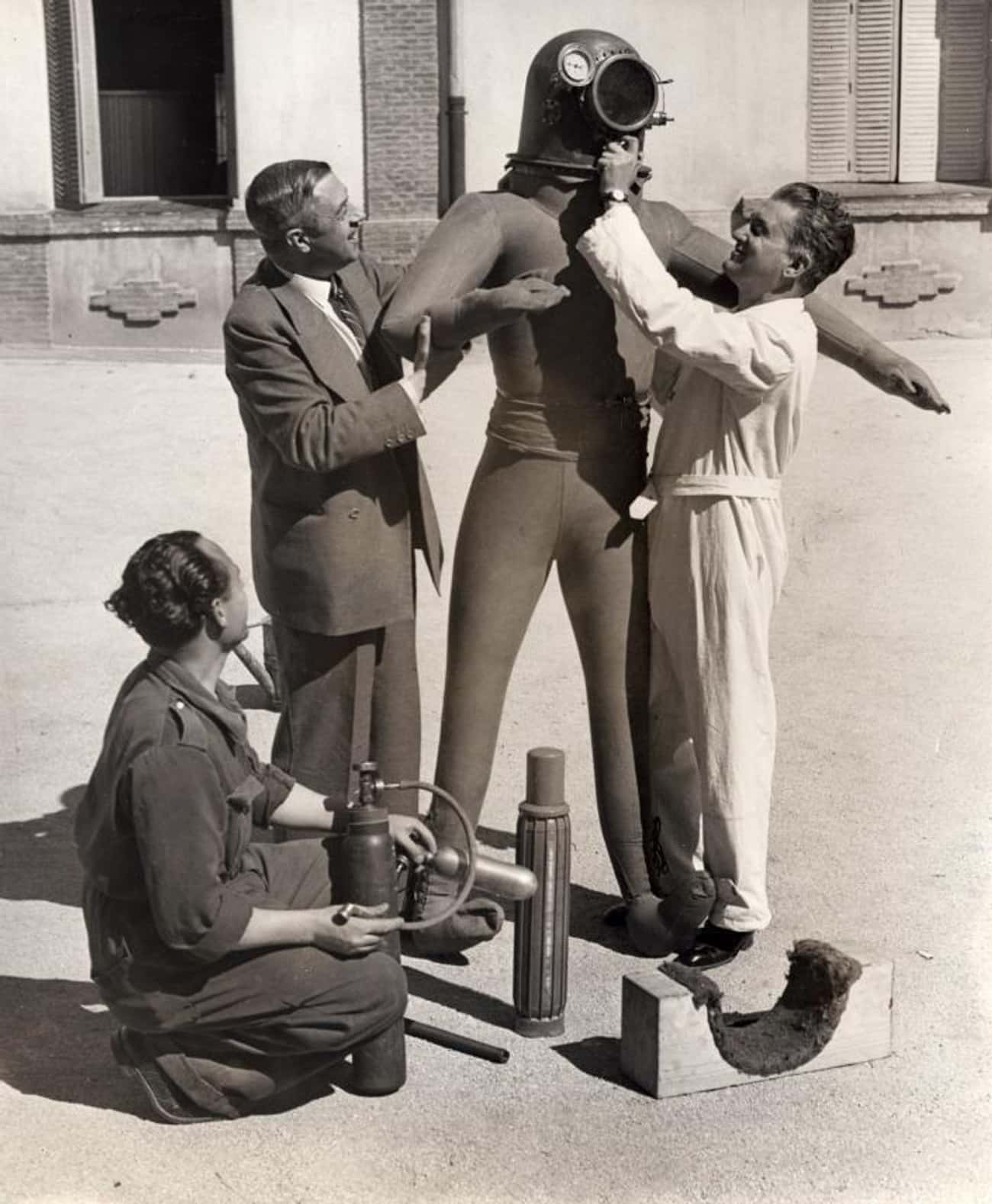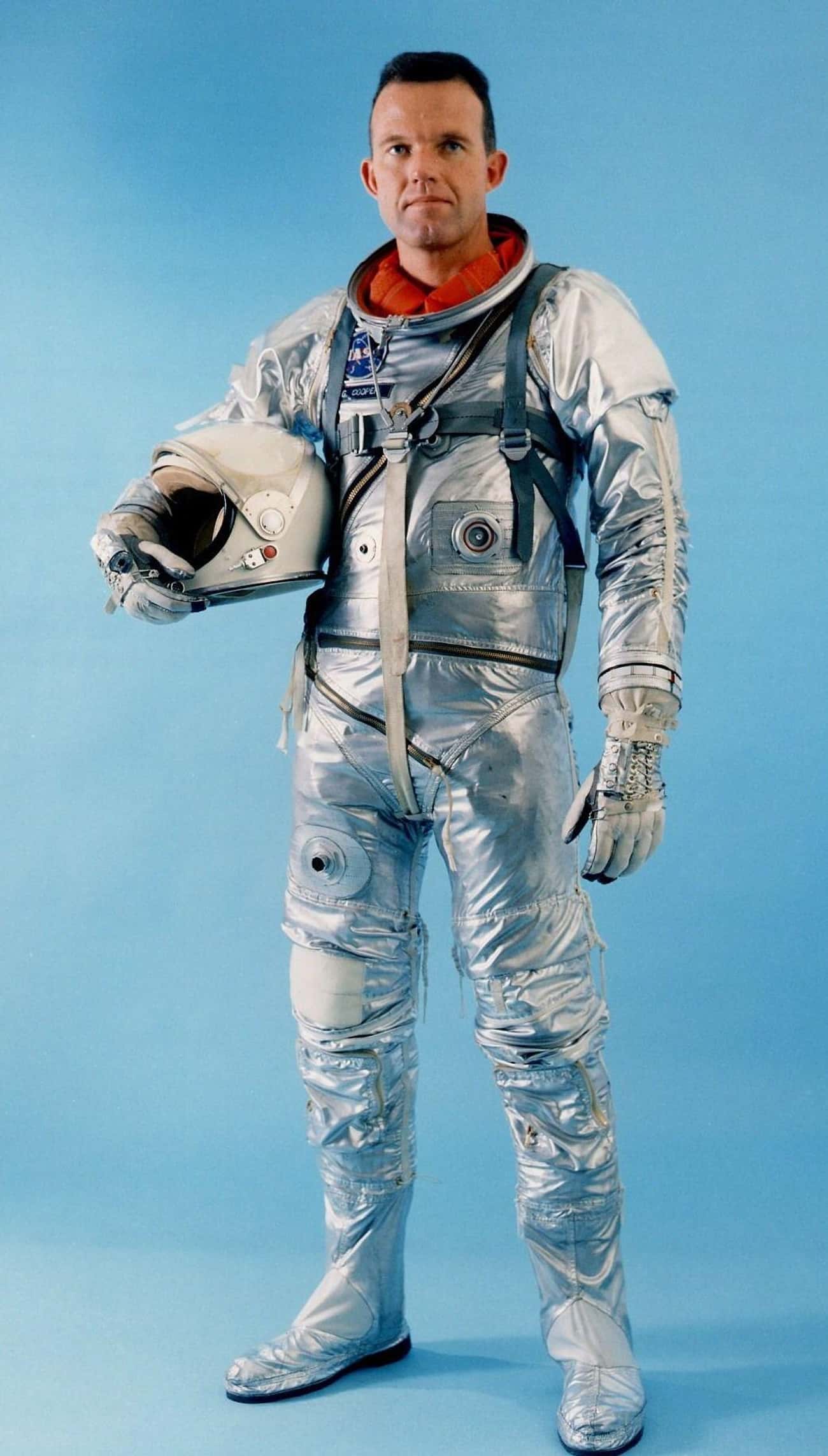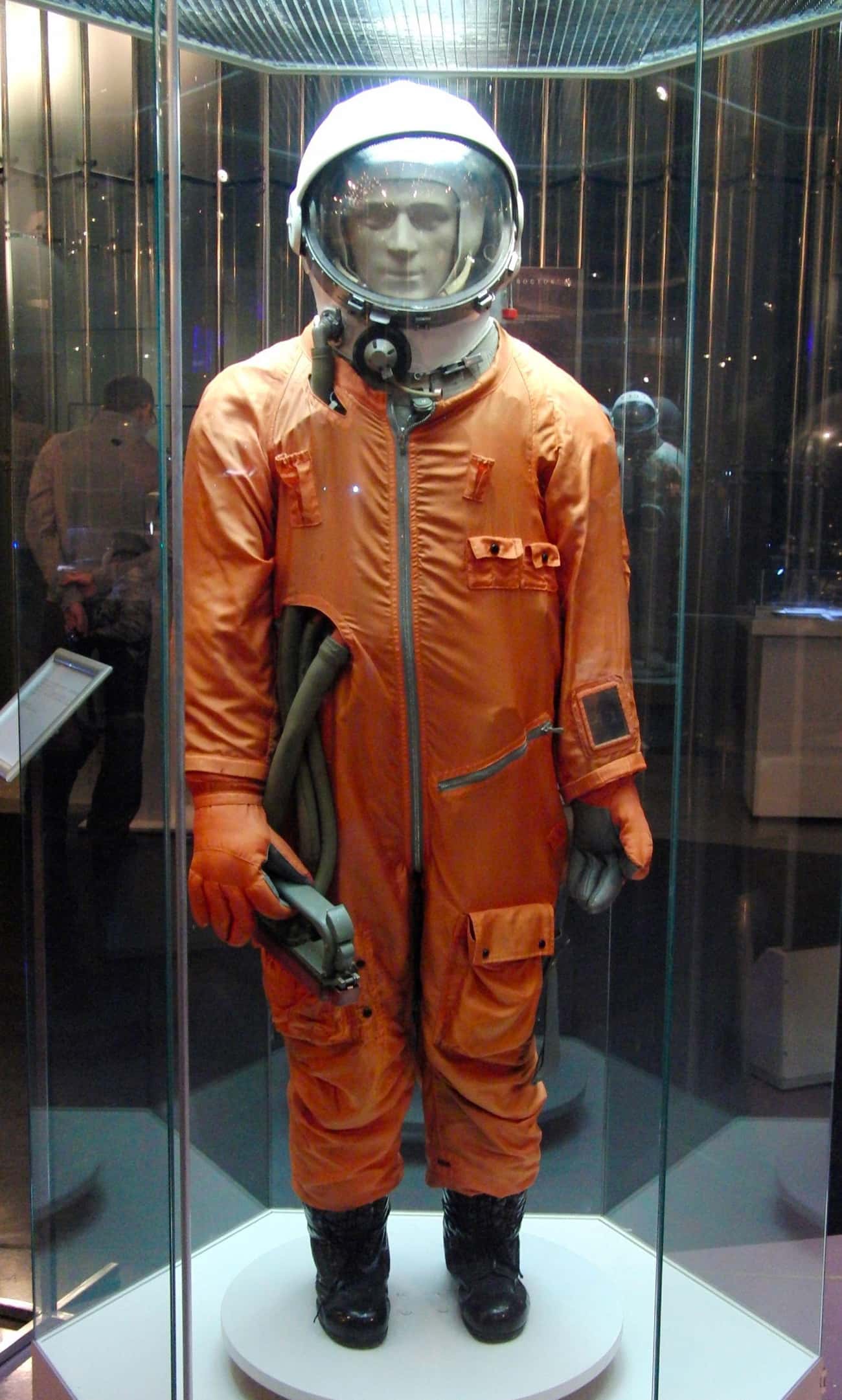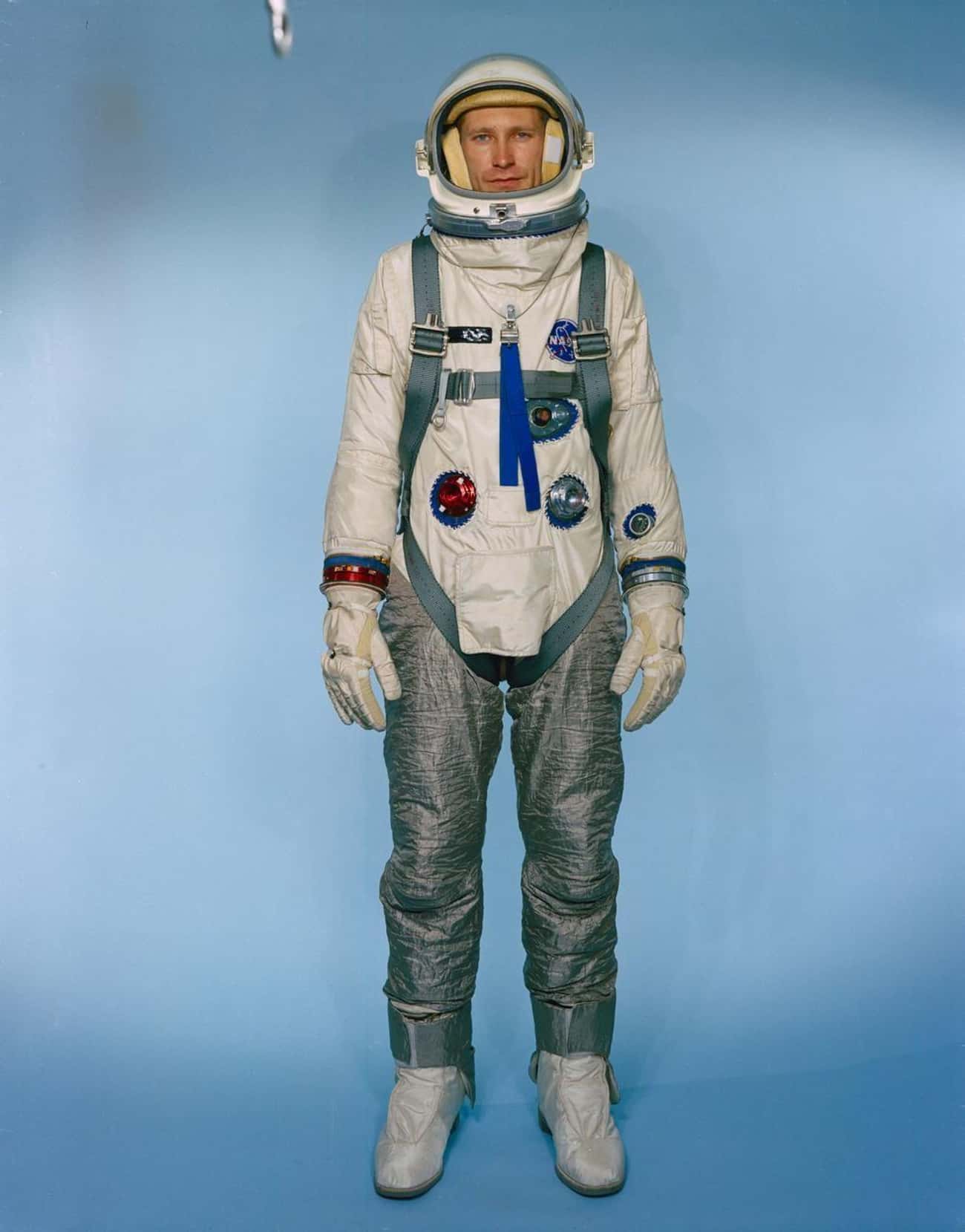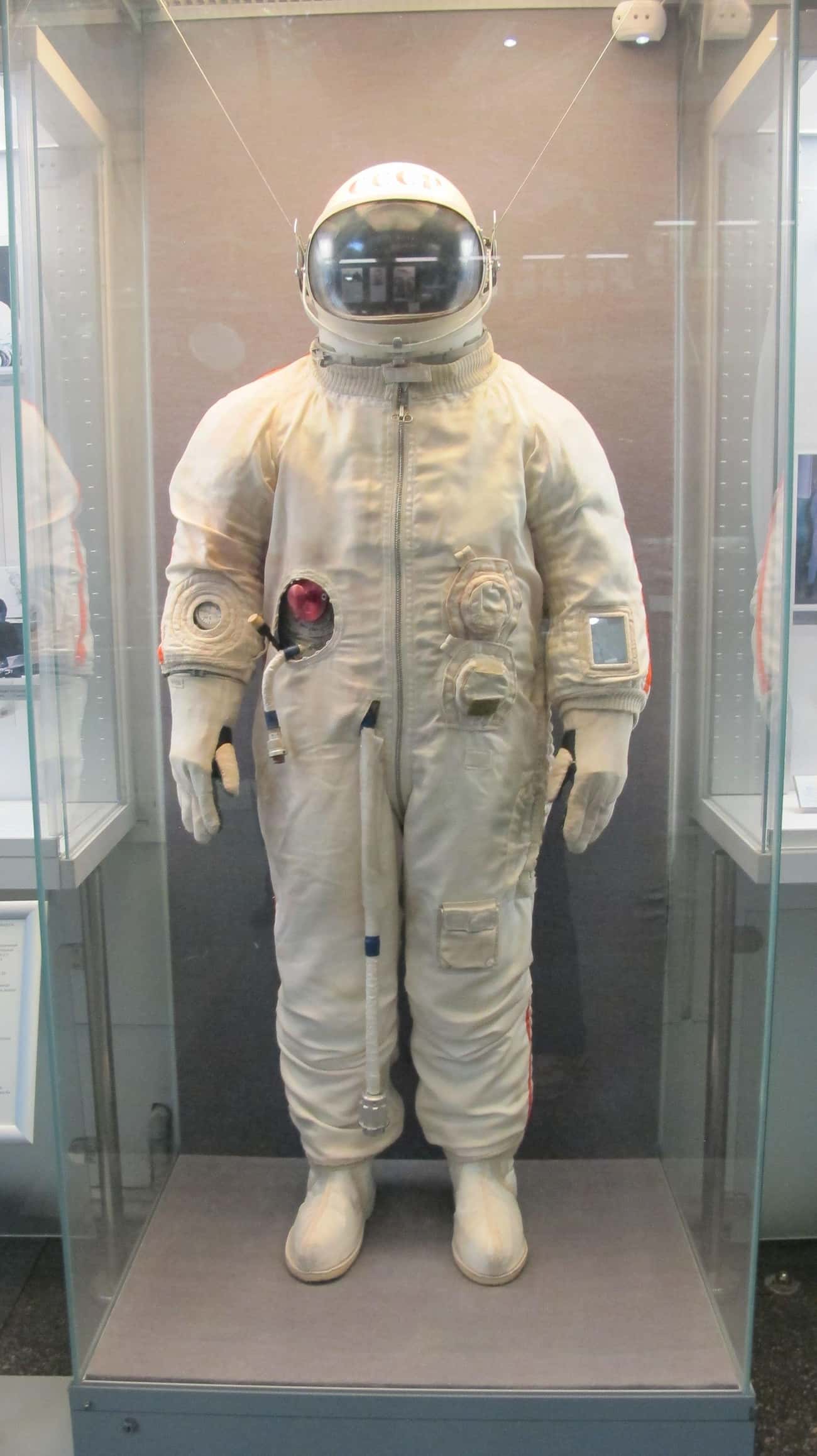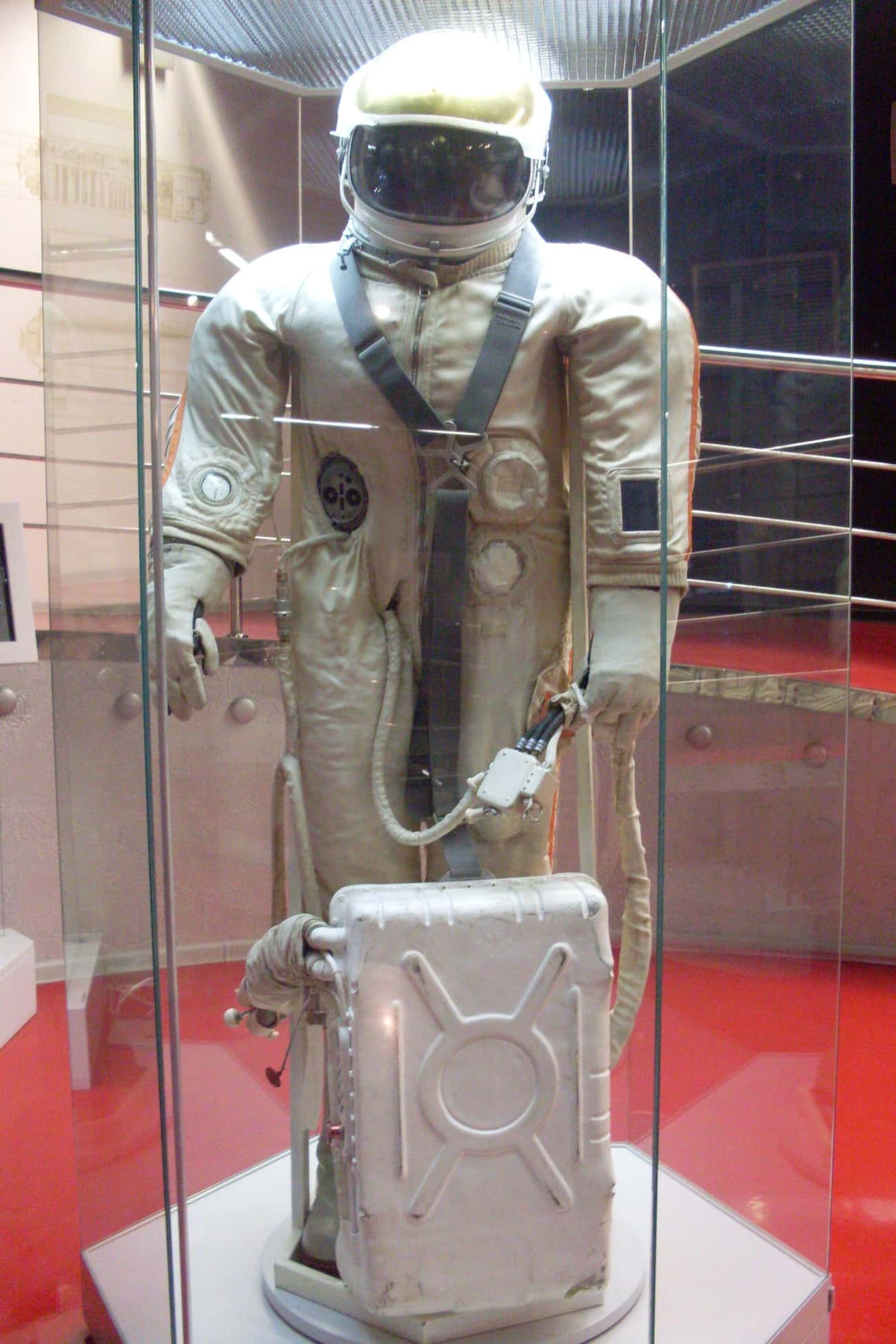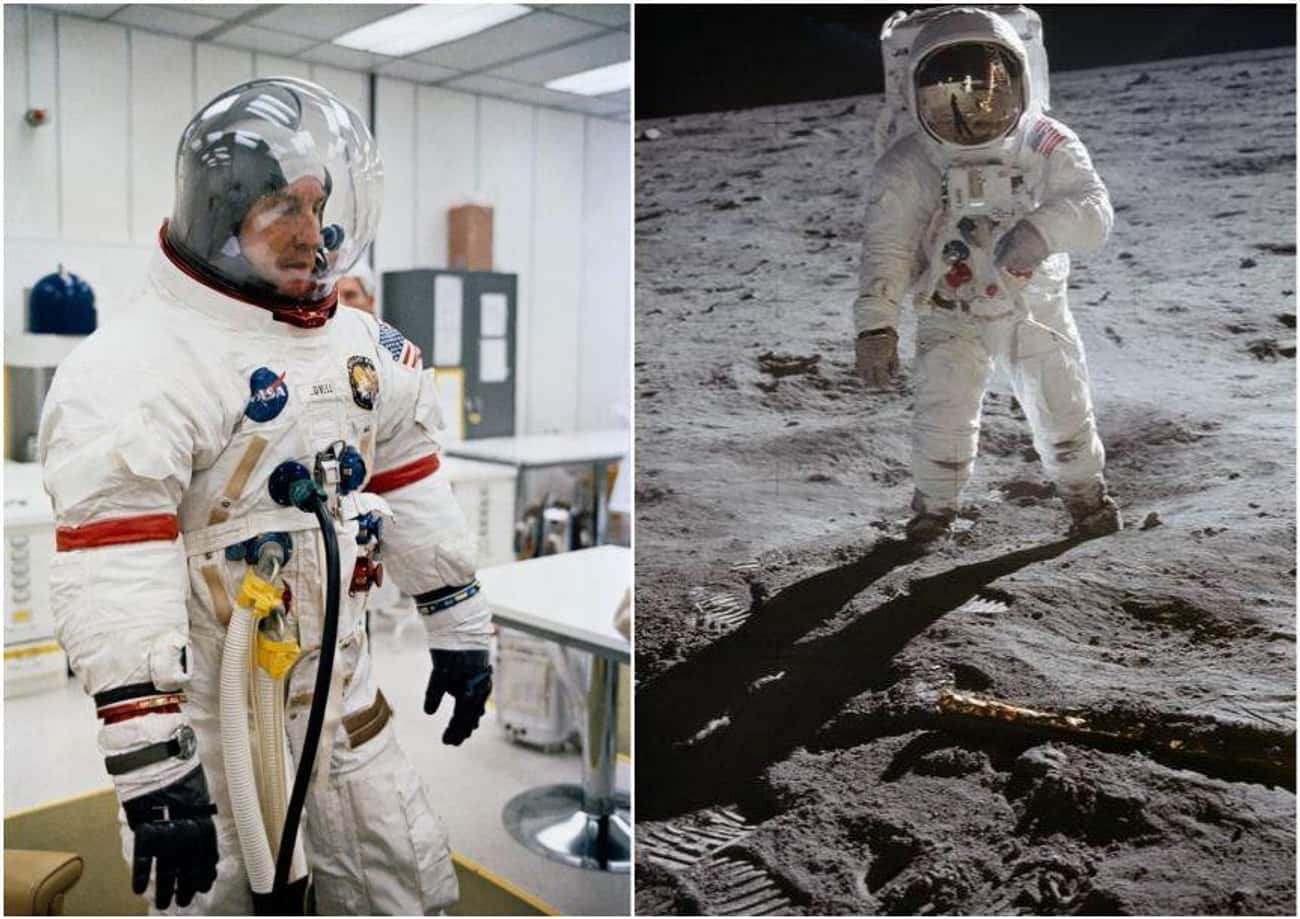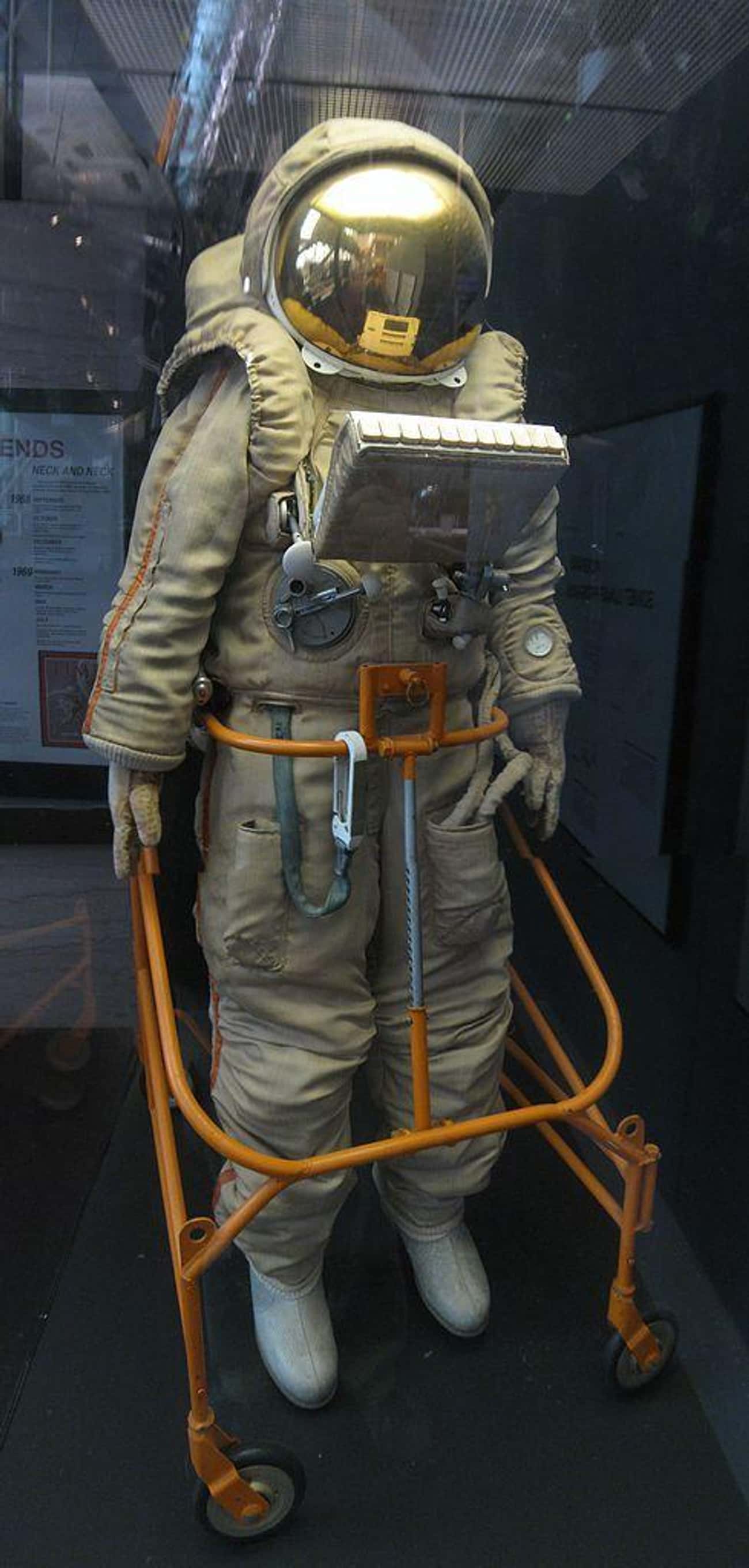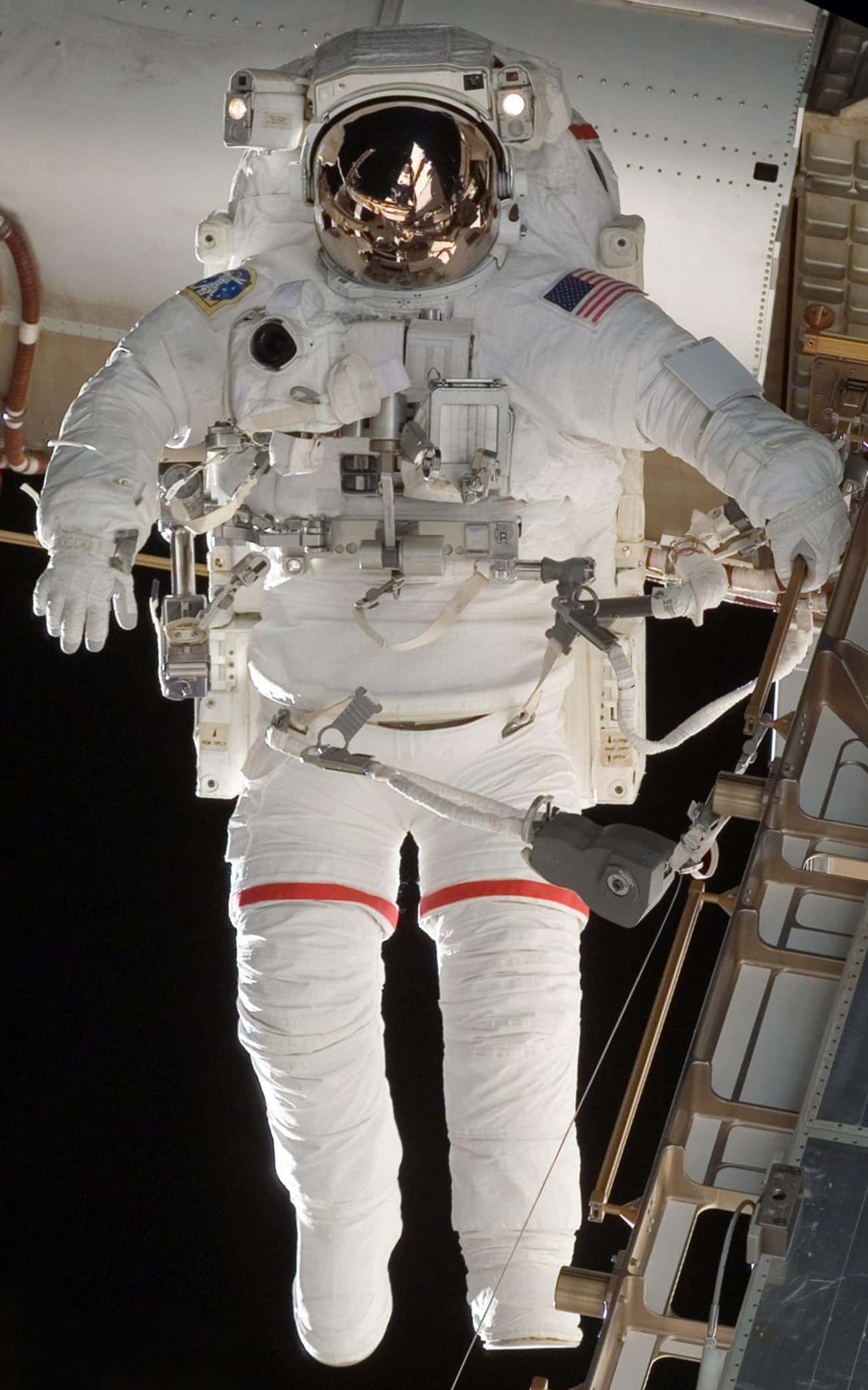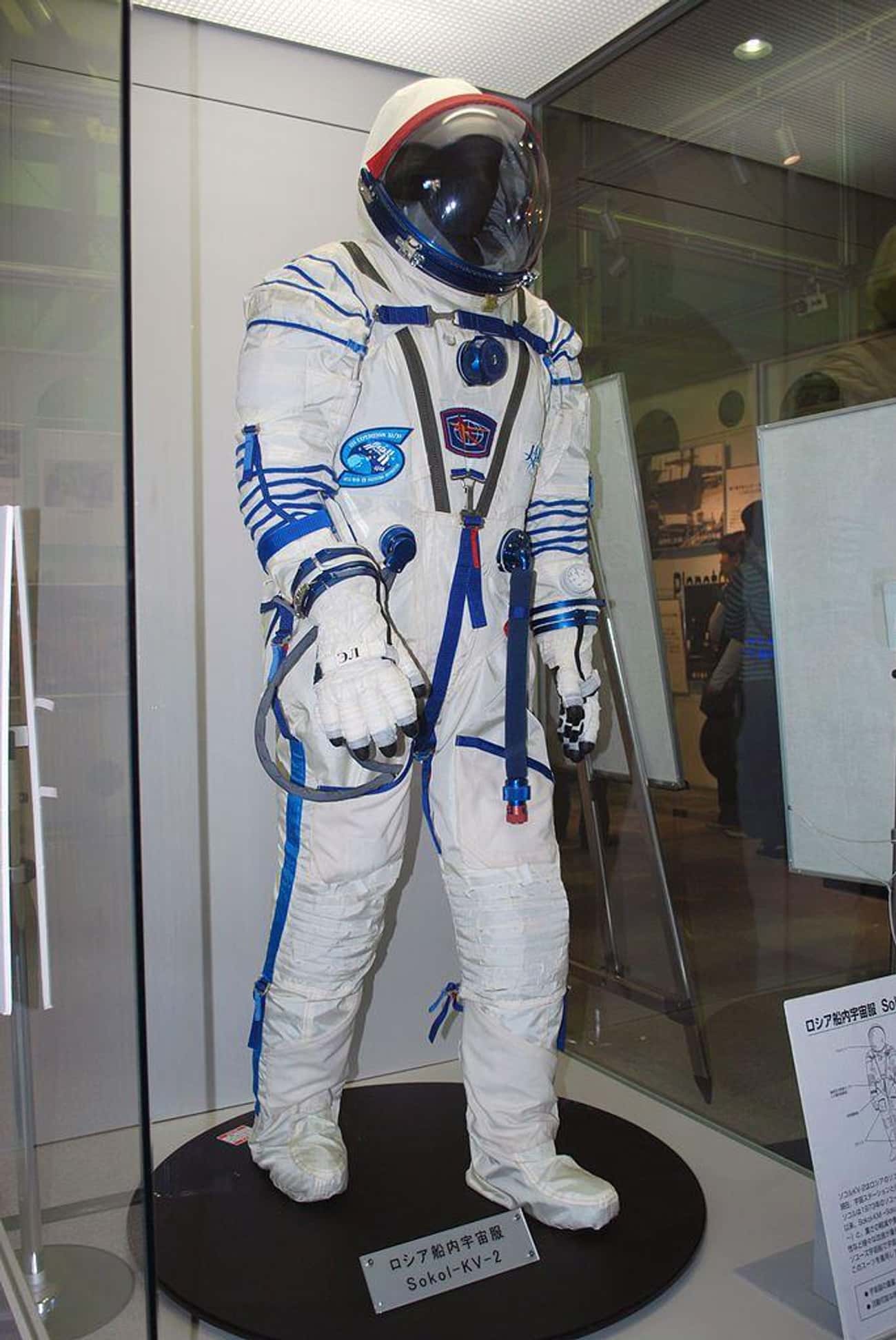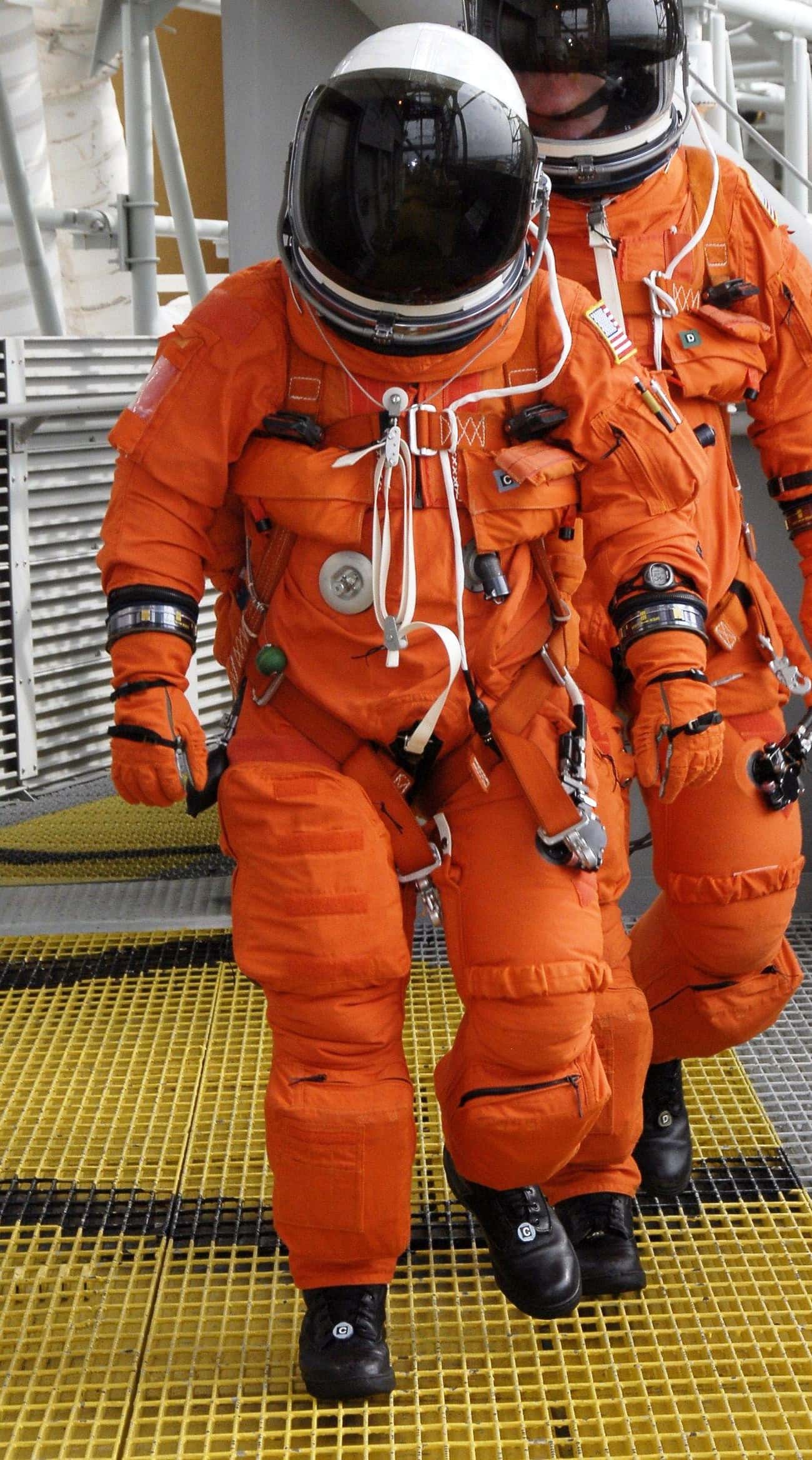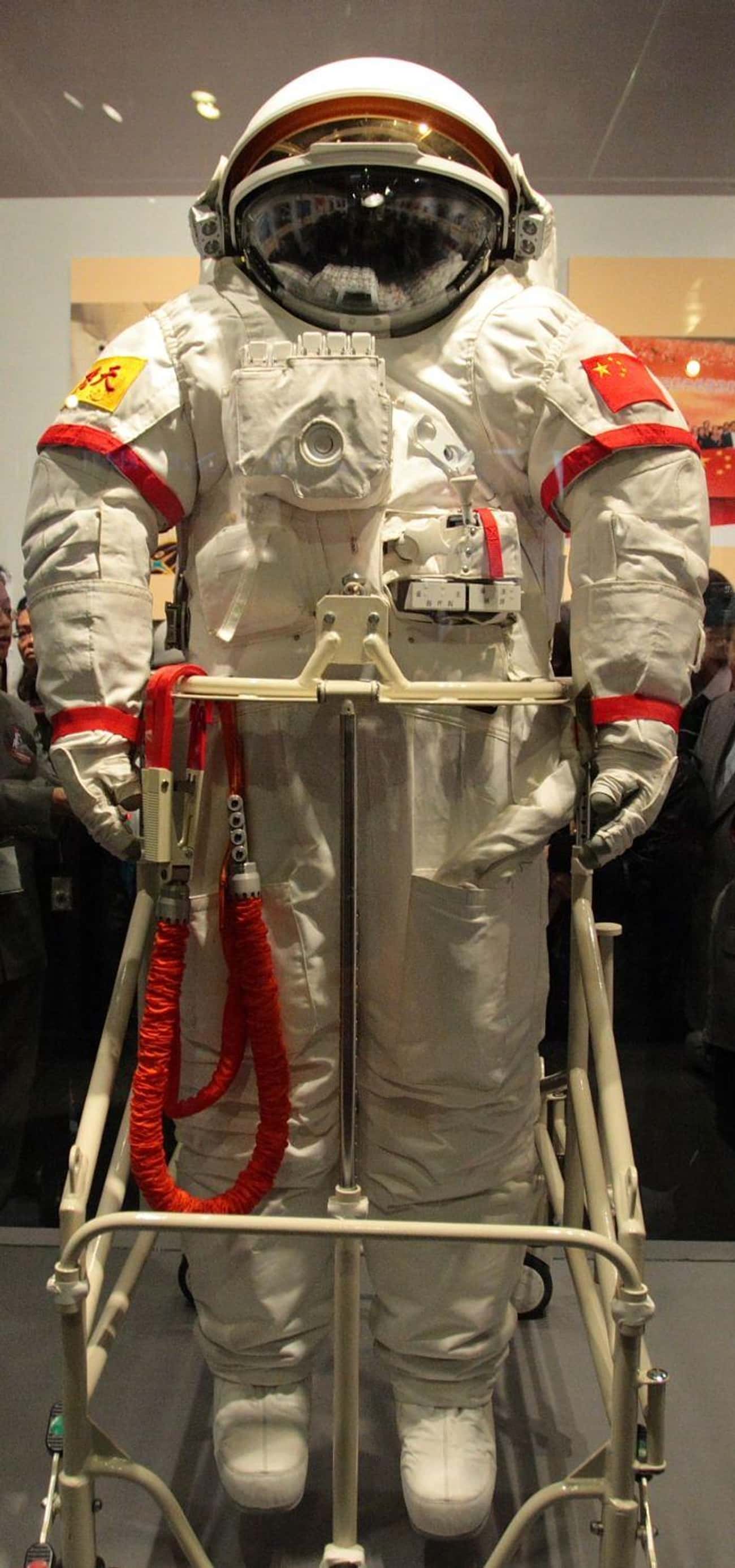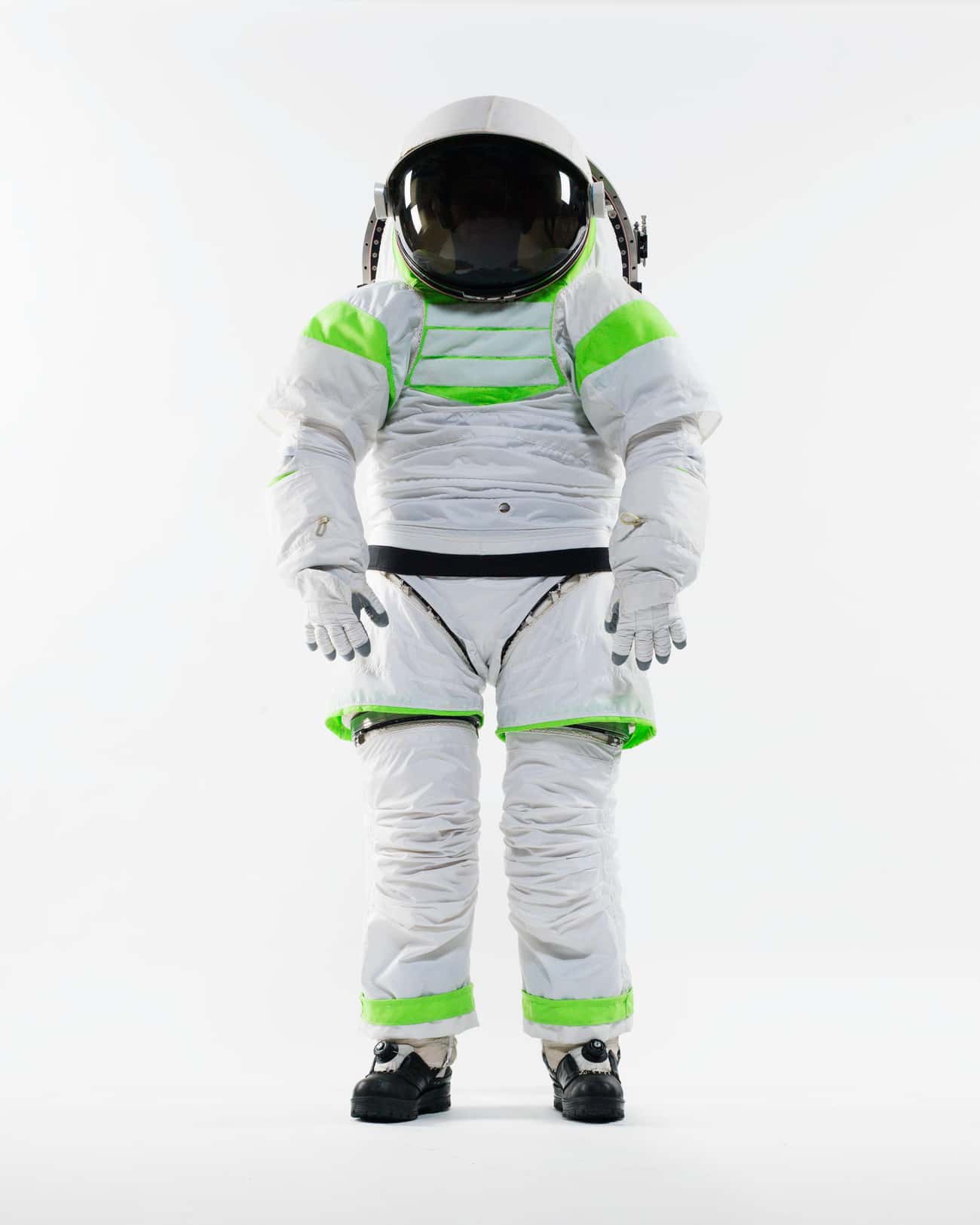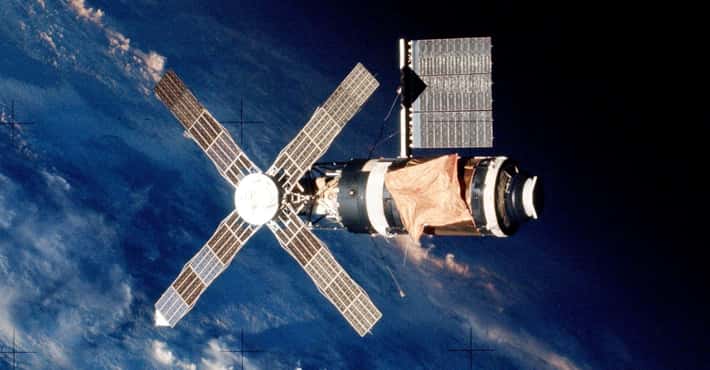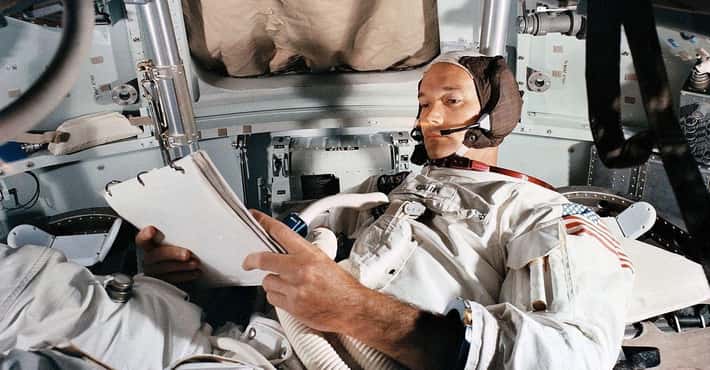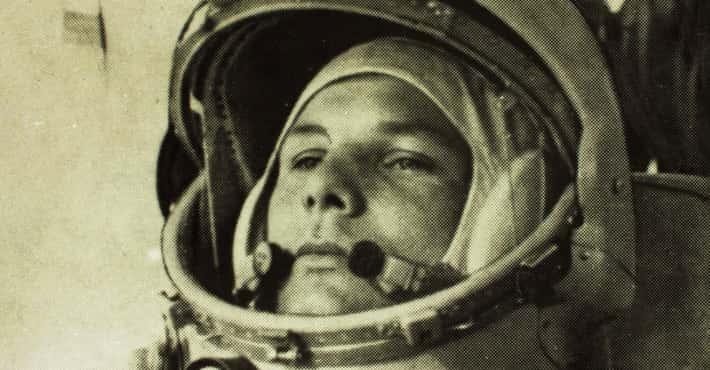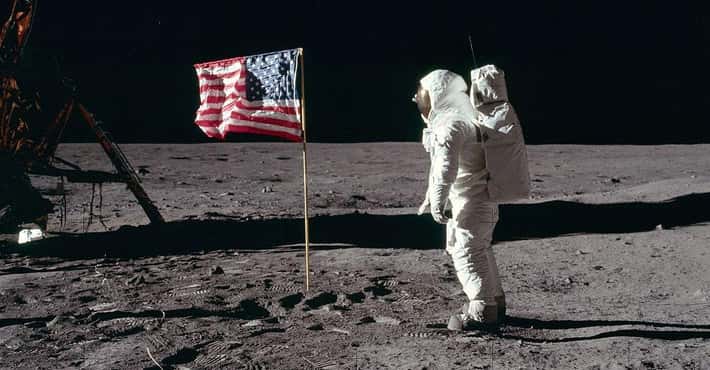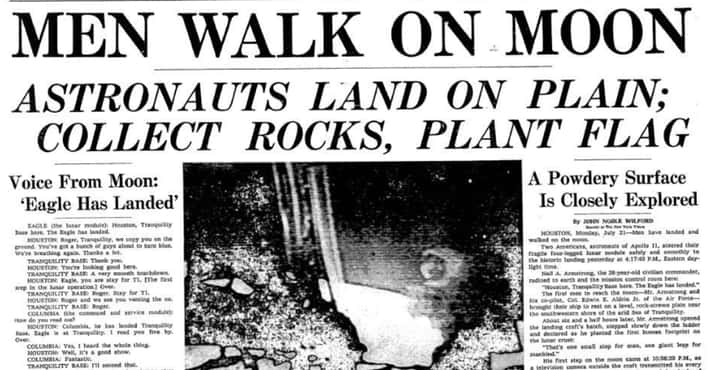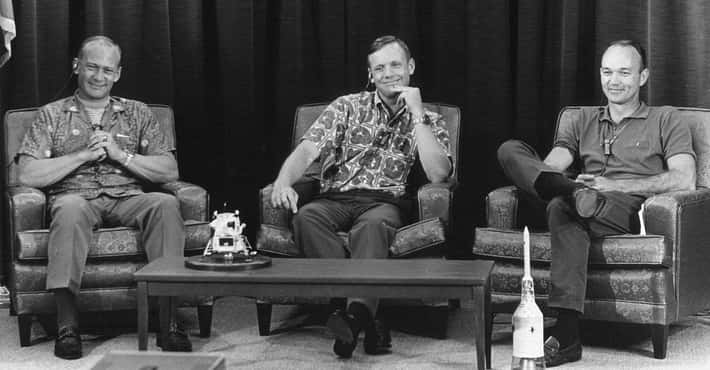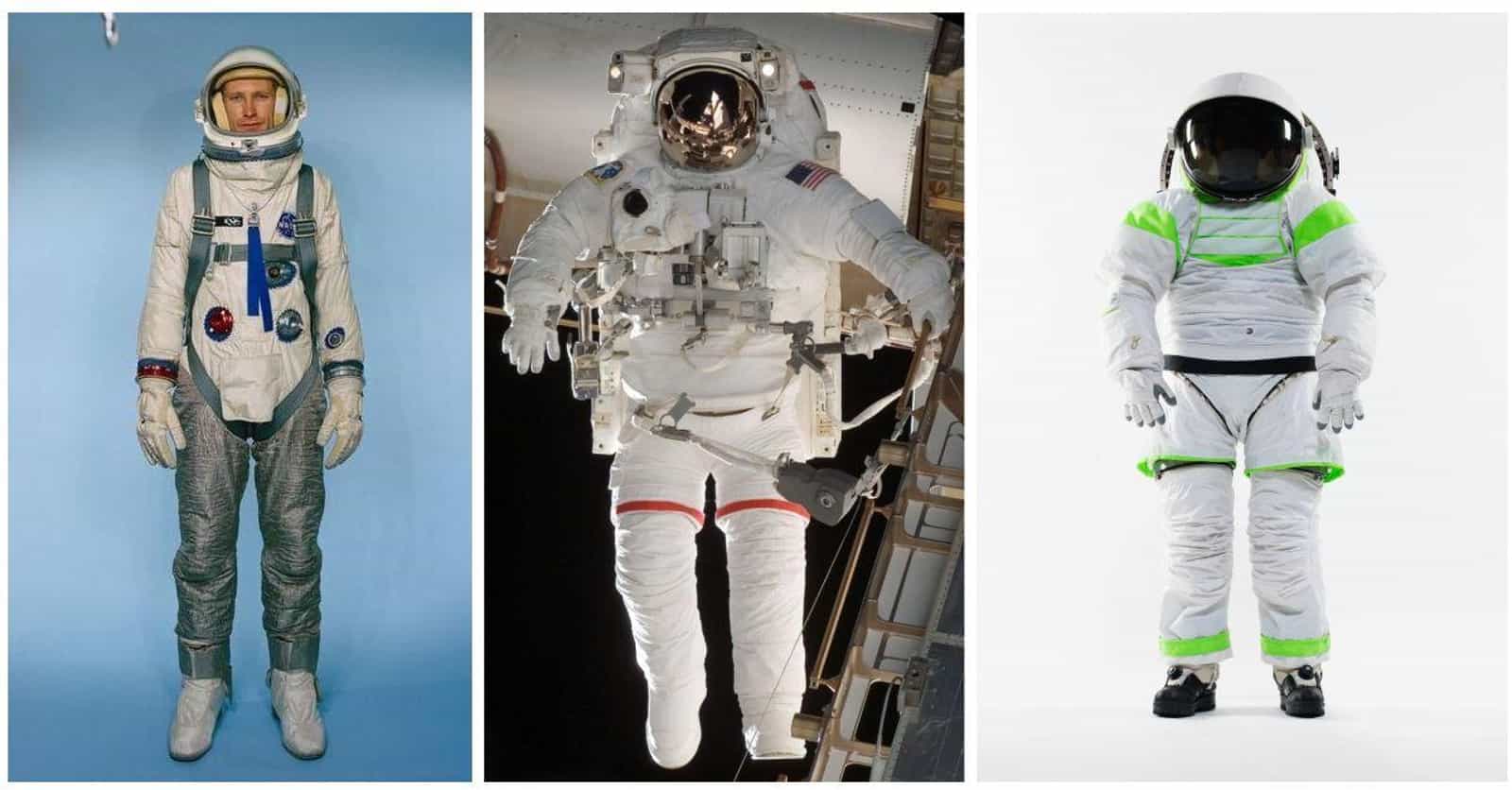
The Visual Evolution Of Space Suits
1935: Escafandra Estratonautica, Spain
Photo: Nationaal Archief / Wikimedia Commons / No RestrictionsAn early predecessor to the modern space suit, the Herrera space suit was designed by Spanish military engineer Emilio Herrera Linares for an open-basket balloon stratospheric flight. The rubberized silk suit featured a three-layered glass panel, a metallic frame, and a closed-circuit heating system.
1961-63: Mercury Space Suit, United States
Photo: NASA / Wikimedia Commons / Public DomainInitially designed as a suit for US military pilots, the Mercury space suit's lightweight and highly mobile design was intended for use in unpressurized, high-alititude planes but proved a good starting point for the Mercury space project.
Like the Navy Mark IV, the Mercury space suit was designed as a safety precaution in case the ship's cabin rapidly depressurized.
1961-63: SK-1 Space Suit, USSR
The SK-1 was the first space suit ever used for its intended purpose and to its full capactiy. The suit was pressurized and featured a nondetachable helmet visored helmet, a life support system, and an inflatable rubber collar in case of an emergency water landing.
The suit was specifically developed for the first man in space, Yuri Gagarin, but was also used in the later Vostok missions.
1964: Gemini Space Suit, United States
Photo: JSC / NASA / Public DomainThe Gemini space suit's major improvement from the Mercury model was its flexibility. Rather than fabric-type joints, the Gemini model combined Neoprene-coated nylon airbladders and a link-net restraint layer, which allowed for more mobility when pressurized.
1965: Berkut Space Suit, USSR
Photo: Krassotkin / Wikimedia Commons / Public DomainThe Berkut space suit improved on its predecessor, the SK-1, with an internal life-support system. Rather than an employing an external umbilical cord to supply air into the suit, oxygen was circulated through an open-cycle environmental control system between oxygen tanks - located in the suit's backpack - and the rest of the suit.
1966-69: Yastreb Space Suit, USSR
Photo: Armael / Wikimedia Commons / Public DomainThe Yastreb space suit was the first Russian suit designed specifically for extravehicular activity. As such, the suit was designed to be flexible and lightweight. It had an external pulley system, which provided extra mobility, and a compact life support system in order to easily maneuver around the smaller Soyuz rockets.
1968-75: Apollo/Skylab A7L Space Suit, United States
Unlike the Gemini space suit, Apollo space suits were designed for use on the Moon; thus, they were required to sustain livable temperatures in the suit's interior during the hot lunar day and offer protection against jagged rocks. Simultaneously, the suits needed to be flexible so astronauts could grab rock samples from the Moon's surface.
The Apollo suits featured a protective outer layer, a portable life-support backpack with seven hours' worth of air, a liquid-cooling system, and a helmet fixed on the suit with an external helmet attachment to block out UV rays and keep internal temperatures cool.
1969: Krechet-94, USSR
Photo: Tyrol5 / Wikimedia Commons / CC BY-SA 3.0The Krechet-94 was a Russian space suit designed for lunar exploration. To don the suit, astronauts had to enter a hatch connected to the suit's external backpack life-support system.
Like its American counterpart, the Apollo space suit, the Krechet-94 featured protective outlayers, a reflective visor to keep out UV radiation, and an internal cooling system. This suit, however, had the added benefit of no external tubing.
1971: Orlan Space Suit, Russia
Photo: NASA/Sergei Krikalev / Wikimedia Commons / Public DomainDesigned in 1971, the Orlan space suit is still used for spacewalks and any movement outside of a pressurized space cabin. The suit is composed of a rigid torso and helmet frame, and has flexible limbs for increased mobility.
Unlike its American counterparts, the Orlan space suit has no external hose due to its integrated life-support system.
1981: EMU Suit, United States
Photo: Amiko Kauderer / NASA / Public DomainThe Extravehicular Mobility Unit is designed for use outside of the pressurized space shuttle cabin. It features 14 layers of material each serving different purposes, ranging from cooling to pressurizing and thermal protection. Unlike all previous space suits, the EMU is not custom fitted to a single person, but rather meant for multiple uses.
1973-2018: Sokol Space Suit, USSR
Photo: Polimerek / Wikimedia Commons / CC BY-SA 3.0The Russian Sokol space suit was first designed in 1973 after three astronauts suffocated on Soyuz 11 in 1971. The lightweight space suit, which is still used today, is internally pressurized and has integrated shoes, though the gloves and helmet are removable.
Through a system of tubes and electrical cables, the suit can be worn for up to 30 hours in a pressurized environment, or two hours within a vacuum. It was designed not for spacewalks, but for use within the Soyuz rocket during moments of low cabin pressure during the rocket's ascent and descent.
1988-98: Launch Entry Suit, United States
Photo: NASA / Wikimedia Commons / Public DomainSimilar to its Russian counterpart, the bright orange Sokol space suit, the American Launch Entry Suit is intended for exit and re-entry into Earth's atmosphere. It was designed with a pressure-sealed visor and helmet collar, and an integrated anti-gravity suit to prevent the wearer's blood from pooling in their lower body during re-entry.
1988: AX-5 Hard-Shell Space Suit, United States
Photo: Wade Sisler (NASA) / Wikimedia Commons / Public DomainThe AX-5's rigid design was intended to withstand high levels of air pressure while allowing unrestricted mobility with its rounded joints. Unlike previous extravehicular mobility units, the wearer wasn't required to purge nitrogen from their blood before taking a spacewalk.
Though this prototype has never been used in space, many of its features are applied to modern space suit designs.
1998: Advanced Crew Escape Suit, United States
Photo: NASA/Kim Shiflett / Wikimedia Commons / Public DomainSimilar to its predecessor, the launch entry suit, the Advanced Crew Escape Suit is meant to protect crew members in the case of rapid cabin depressurization. The design greatly improves upon that of its predecssor: it's fully pressurized, protects crew members from air contamination, and has an internal liquid-cooling system.
This suit is still in use today, though materials and technologies have improved since it was first introduced.
2007: Feitian EVA Suit, China
Photo: Johnson Lau / Wikimedia Commons / CC BY-SA 3.0The Feitian EVA suit was reverse-engineered from a Russian Orlan suit sold to China in 2004. Though the design is mostly similar to its Russian counterpart, there are several differences, including the larger visor.
The suit is also made from purely Chinese materials and sports Chinese telemetry, digital communications, and data management systems and software.
2011: Final Frontier Design IVA Space Suit, United States
Photo: Nik1718 / Wikimedia Commons / CC BY-SA 4.0While its testing is not yet complete, the Final Frontier Design IVA space suit is a lightweight space suit designed for commercial use. The purpose of the suit, besides protecting the wearer from the stresses of space, is to be highly accessible and cost-effective while providing the wearer more mobility than previous suits.
2012: Z-1 EVA Space Suit, United States
Photo: NASA / Wikimedia Commons / Public DomainThe Z-1 prototype spacesuit was designed for use in 2014, but as of early 2019, has never been used in space. Designed similarly to the Russian Orlan, the Z-1 has a semi-rigid torso with a life-support backpack, which covers a hatch inside the suit.
The suit's design is intended to maintain stable pressure between the suit and the ship's cabin in order to shorten the pre-breath preparation that older suits required. Such preparations prevented the wearer from developing decompression sickness. The suit utilizes newer materials and provides increased mobility over that of the older EMU.


